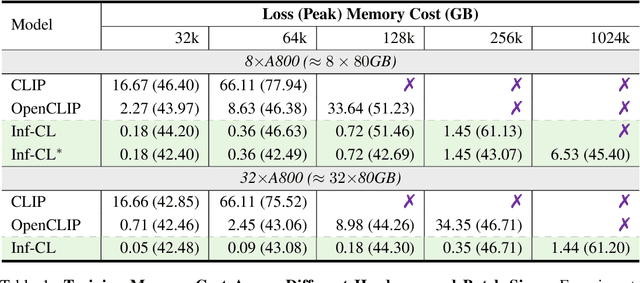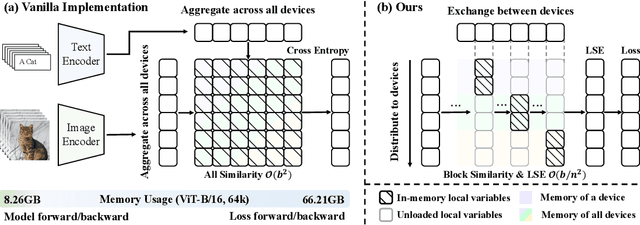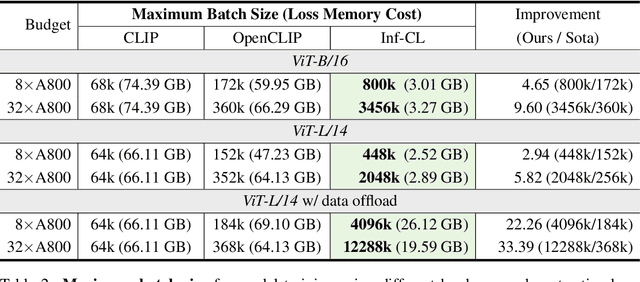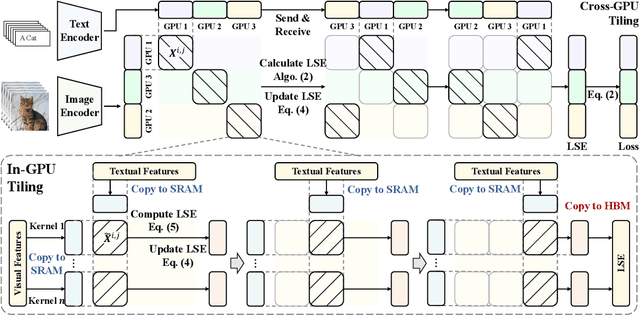Breaking the Memory Barrier: Near Infinite Batch Size Scaling for Contrastive Loss
Paper and Code
Oct 22, 2024



Contrastive loss is a powerful approach for representation learning, where larger batch sizes enhance performance by providing more negative samples to better distinguish between similar and dissimilar data. However, scaling batch sizes is constrained by the quadratic growth in GPU memory consumption, primarily due to the full instantiation of the similarity matrix. To address this, we propose a tile-based computation strategy that partitions the contrastive loss calculation into arbitrary small blocks, avoiding full materialization of the similarity matrix. Furthermore, we introduce a multi-level tiling strategy to leverage the hierarchical structure of distributed systems, employing ring-based communication at the GPU level to optimize synchronization and fused kernels at the CUDA core level to reduce I/O overhead. Experimental results show that the proposed method scales batch sizes to unprecedented levels. For instance, it enables contrastive training of a CLIP-ViT-L/14 model with a batch size of 4M or 12M using 8 or 32 A800 80GB without sacrificing any accuracy. Compared to SOTA memory-efficient solutions, it achieves a two-order-of-magnitude reduction in memory while maintaining comparable speed. The code will be made publicly available.
 Add to Chrome
Add to Chrome Add to Firefox
Add to Firefox Add to Edge
Add to Edge